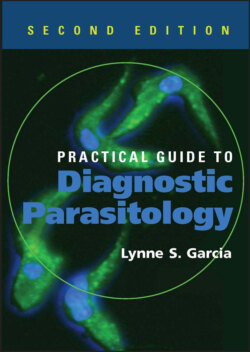Читать книгу Practical Guide to Diagnostic Parasitology - Lynne Shore Garcia - Страница 31
На сайте Литреса книга снята с продажи.
What Testing Should Be Performed? Routine Tests
Оглавление“Routine” can imply a widely used, well-understood laboratory test; it can also imply a low or moderately complex method, rather than a high complexity procedure. Routine diagnostic parasitology procedures could include the ova and parasite examination (O&P exam), preparation and examination of blood films and pinworm tapes/paddles, occult blood tests, and examination of specimens from other body sites (urine, sputum, duodenal aspirates, urogenital specimens, etc.).
The selection and use of routine test procedures often depend on a number of factors including geographic area, population served, overall positivity rate, client preference, number of test orders, staffing, personnel experience, turnaround time requirements, epidemiology considerations, clinical relevance of test results, and cost. Routine tests generally have a wide range in both sensitivity and specificity. As an example, the O&P exam (direct wet mount, concentration, permanent stained smear) could be considered a routine test method for the detection of a number of different intestinal protozoa and helminth infections; this procedure is moderately sensitive but relatively nonspecific. Monoclonal antibody-based test methods tend to be very specific (generally for a single organism such as Giardia lamblia) and more sensitive than the routine O&P exam for specific intestinal protozoa. However, the test results are limited in scope; either the organism is present or it’s not, and none of the other possible etiologic agents have been ruled in or out!
Diagnostic laboratories generally offer tests “on request”; an example would be testing for the presence of Cryptosporidium spp. However, if a potential waterborne outbreak was suspected, this laboratory might change its approach and begin testing all stool specimens submitted for an O&P exam rather than testing only specimens accompanied by a specific test request for Cryptosporidium spp. These decisions require close communication with other entities, as described above for potential outbreak testing.
